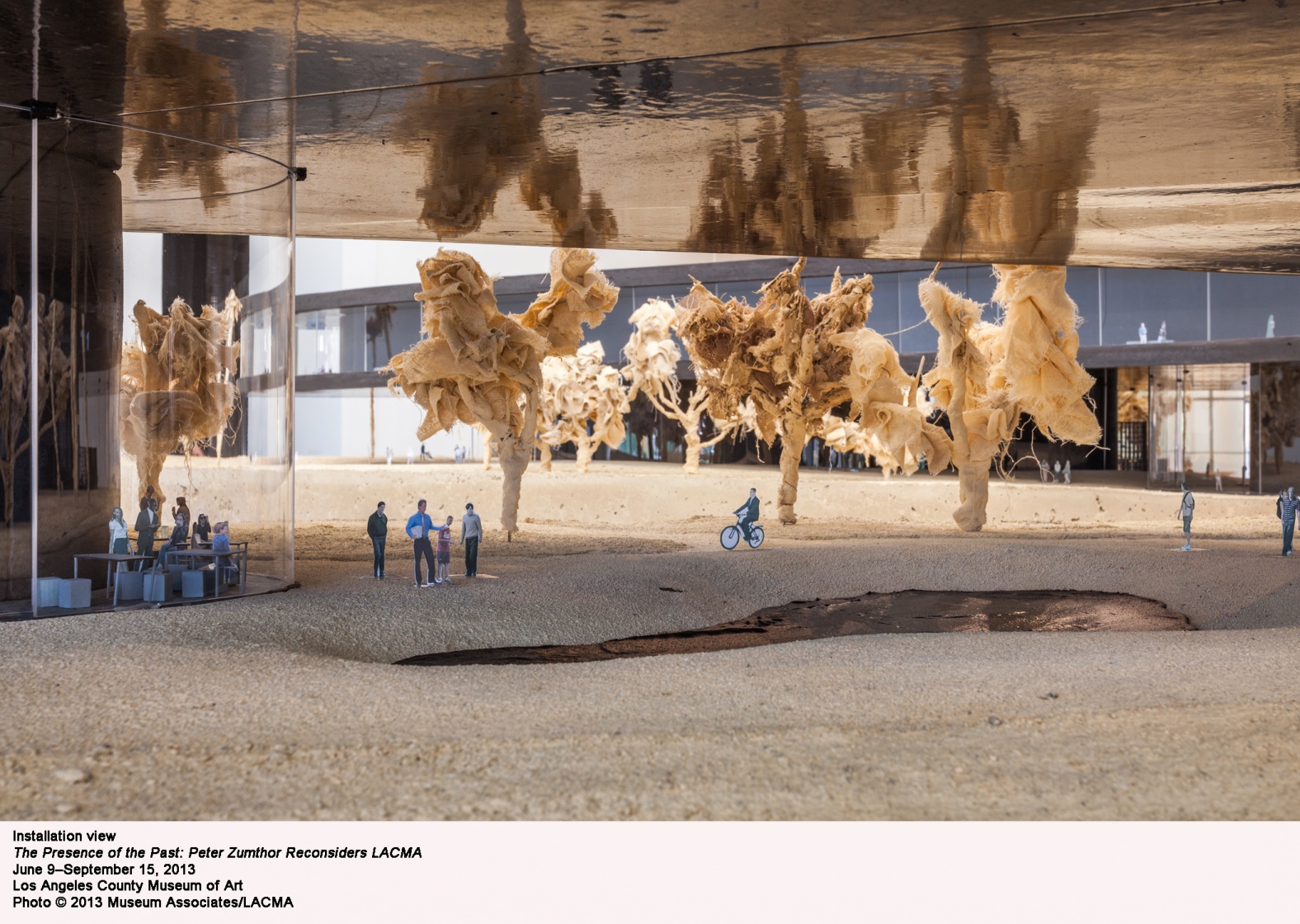A detail view of Zumthor’s model

“Black Flower”—A Proposed New Building for the East Campus at LACMA.
“The proposed museum does not have a classical entrance. Rather, visitors begin their visit through an outdoor space—the existing plaza—which extends under the new building to reveal eight thematic cores that appear as independent volumes on the park level and rise into the exhibition level above. The ticket office is located in a freestanding space off the main plaza.
Each of the eight volumes on the park level provides a point of focus with a specific entrance (including foyer, stairs, and elevators) as well as an open-storage exhibition area, with many artworks visible day and night. These glazed “shop front” installations surround more intimate study centers within. Cores may also include archives, an auditorium, offices, art conservation, a museum shop, a coffee bar, a restaurant, and other kinds of storage. Taking advantage of a sloping site, some cores contain a mezzanine to expand conservation and study areas.
Entering the museum through one of the thematic cores will offer visitors various starting points to the exhibition level. From the stairs or elevators, one arrives at the Veranda Gallery, which surrounds the whole exhibition level and looks out to the city. A visitor can stay within the chosen core, journeying inward to formal galleries; decide to walk beside the façade to find entrances to the other five collection areas; or go to the restaurant facing the plaza.
On the exhibition level, six gallery areas create their own quiet centers of gravity with key pieces from the collection. In contrast to the curvilinear Veranda Gallery along the exterior, the inner galleries offer orthogonal arrangements of walls, shifting in orientation from core to core. The diverse grids create unique settings for each collection installation and offer recognizable points of reference within the whole.
Encircling the entire building, the perimeter path—the Veranda Gallery— provides a rare and grand experience that connects everything: all the installations within the museum as well as the museum and the surrounding metropolis.”